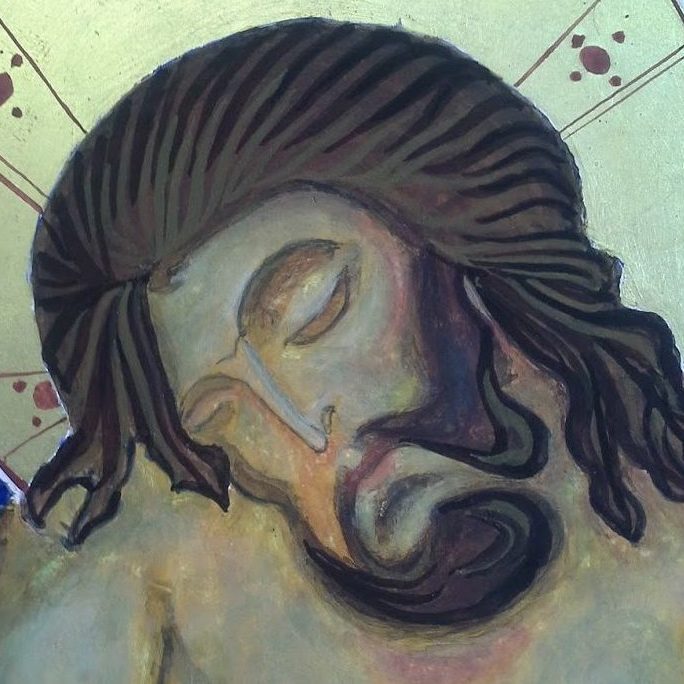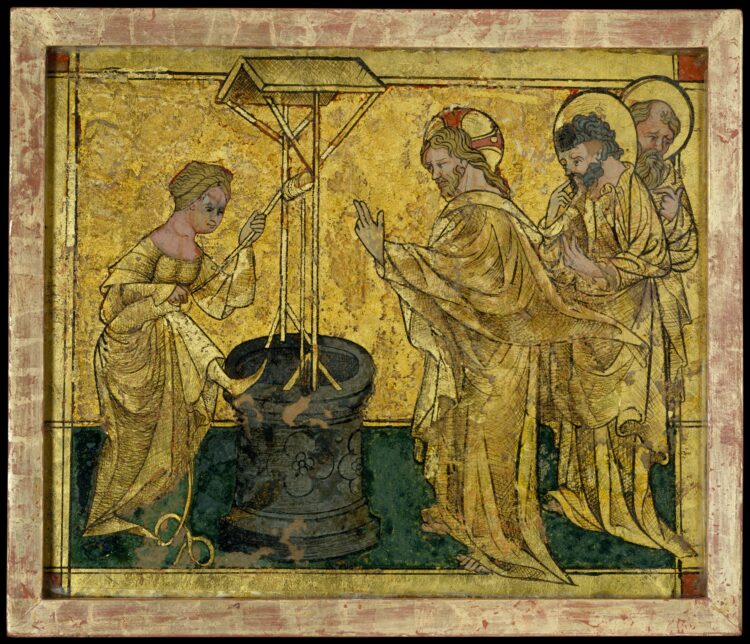How much lovely are these accounts of encounters between Jesus and individual people, and the conversations that took place. Last week we heard of the encounter between Jesus and Nicodemus who came to Jesus by night. Today we hear of the Samaritan woman who came to Jesus in the brightness and heat of the middle of the day.
The woman at the well, as we know her, has a name in Orthodox christianity. She is known in the Eastern tradition as Photini (the luminous one). Eastern Christians remember her as a Great Martyr and refer to her as Equal-to-the-Apostles. Her feast day is February 26th.
Her story, in John’s Gospel, is a fascinating one, with hidden depths of meaning, some of which I will try to unpick for you today.
So, first of all, she was a Samaritan. Along with Jesus’ parable of the Good Samaritan, this description is so familiar that we don’t really stop to think about what exactly that means. Did you know that Samaritans still exist, as does the Samaritan religion, which is called Samaritanism. Samaritanism is an Abrahamic, monotheistic, ethnic religion and the Samaritan people are an ethnoreligious group who, alongside Jews, originate from the ancient Israelites. Their holiest site is Mount Gerizim near Nablus. The split from Judaism came shortly after the arrival in the promised land and was to do with the prophet Eli – the one who looked after the boy Samuel. Their central holy text is the Samaritan Pentateuch, which Samaritans believe is the original, unchanged version of the Torah.
So, none of the rest of what we call the Old testament was on the radar of this woman, Photini – she wouldn’t have been familiar with the psalms or the prophets. This explains the rather muddled conversation between Jesus and Photini – Jesus talks about water metaphorically as something that quenches spiritual thirst, about God’s abundant self-outpouring to humankind. So she would have been unfamiliar with texts like these:
Surely God is my salvation;
I will trust and not be afraid.
The Lord, the Lord himself, is my strength and my defense[a];
he has become my salvation.”
With joy you will draw water
from the wells of salvation. (Isaiah 12:2-3)
Fruit trees of all kinds will grow on both banks of the river. Their leaves will not wither, nor will their fruit fail. Every month they will bear fruit, because the water from the sanctuary flows to them. (Ezekiel 47:12)
As a deer longs for the flowing streams,
so longs my soul for you O God.
My soul thirsts for God,
For the living God. (Ps 63 and 143)
So Jesus knew passages like this very well, Photini would have been unfamiliar with them and so would have been much more likely to miss Jesus’ meaning when he was talking about the water which he gives which means you would never be thirsty again. And us? Well we’re sort of familiar with some of these passages, but what we can take home today is that there is a rich tradition, stemming from the Old Testament (the Hebrew Scriptures) and taken up by Jesus who referred often to water, and described himself as the source of Living Water.
Life sometimes feels arid, un-lively – sometimes we describe ourselves as being in the desert. When you’re there, it’s hard to remember, but such times are when we need to place ourselves in God’s hands and to ask for refreshment – for the living water. But, I think what we have to remember is that Jesus, the source of Living Water, was also the one who cried out, in his last hours, ‘I thirst’. This is one of a number of paradoxes in John’s Gospel: the thirsty one who is the source of living water, the one who is light in the darkness, God becoming vulnerable flesh, the dying life-giver. All these are about incarnation – about the depths of God’s love in becoming a human being and plumbing the deepest and darkest aspects of human experience. When we’re thirsty for life, stuck in a desert-like-place, in our living and our dying, God knows, has been there, is there with us. In this passage, all about life, are echoes of the cross – this is, perhaps, why it is here in our readings for Lent.
Another thing about this passage is the importance of the setting at a well. This would have had clear connotations, at the time of Jesus, about courtship and marriage, as several important Old Testament figures found their future wives at wells: Abraham’s servant found Rebecca for Isaac, Jacob met Rachel, and Moses met Zipporah. When I ask bereaved spouses in their 70s or 80s where they met their wife or husband, as often as not the answer is ‘at a dance’. I think wells were the ancient equivalent! This story, as well as being about Jesus the living water, is about Jesus the divine bridegroom. Subtly, in this conversation about different religions, about the women’s many husbands, set at a well, we are being asked to think about faithfulness: Israel’s intermittent worshiping of other GOd’s is often described in the Bible as adultery. God is faithful to us – but what about our faithfulness to God? Where do we let our eyes wander when we think God isn’t looking? What are our false Gods?
And then there is the woman herself – Photini. Who was she, and how is this conversation to be read? Harold Attridge, an eminent American biblical scholar, has written today’s Gospel story as a drama with notes for the producer about the issues to be faced: does the woman project shame, or modesty, or (given what we now know about wells) sexual availability? What tone of voice does she use – is she polite, or ironic, or, again is she flirting? We could well ask. Who IS this woman?’ Traditionally she has been seen as immoral because of her five husbands and the fact that she is now living with a man to whom she isn’t married. I think it is now almost universally accepted that this is a misreading of the text. Men could divorce their wives very easily at the time of Jesus, or she may have been passed from one brother to another after their deaths, as described in Leviticus – she would have had very little say in the matter. And she could now have been living with her father or her brother – her being described as living with a man doesn’t need to convey anything sinful. Some now argue that, having been married 5 times, she would have been well connected – maybe even a community leader.
What we do know is that she became Jesus’ ambassador in Samaria, and that, through her, many came to believe in Jesus as the Saviour of the world. Her continuing witness is said to have brought so many to the Christian faith that she is described as “equal to the apostles”. In the Eastern Church, and in Roman catholicism, she is celebrated as a saint of renown. Eventually, it is said, having drawn the attention of Emperor Nero, she was brought before him to answer for her faith, suffering many tortures and dying a martyr after being thrown down a dry well. Photini, the luminous one, and Apostle of Christ, a venerable woman. We should celebrate her more in our own tradition!
Tweet
